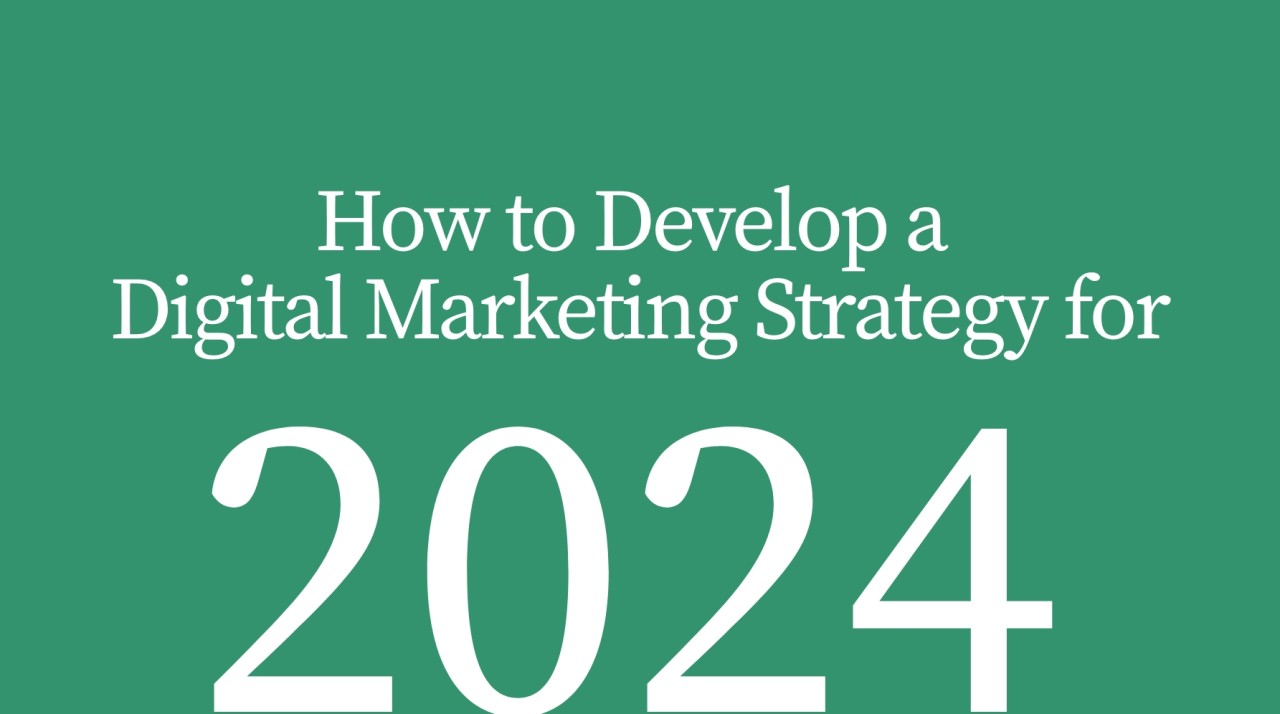Digital marketing is no longer just an option—it’s a necessity for businesses that want to stay competitive. With rapid technological advancements, changing algorithms, and evolving customer behaviors, a well-thought-out digital marketing strategy is more crucial than ever in 2024.
Creating a strategy isn’t just about running ads or posting on social media. It involves thorough research, a deep understanding of your target audience, and the smart use of tools and platforms to drive results. In this blog, we’ll break down how to create a digital marketing strategy for your business in 2024, so you can stand out in a crowded online space and reach your business goals effectively.
Table of Contents:
- Understanding the Importance of a Digital Marketing Strategy
- Steps to Create a Digital Marketing Strategy in 2024:
- Step 1: Set Clear Business and Marketing Goals
- Step 2: Understand Your Audience and Build Personas
- Step 3: Conduct Competitor Research
- Step 4: Select the Right Digital Marketing Channels
- Step 5: Create a Content Marketing Plan
- Step 6: Optimize for SEO
- Step 7: Leverage Paid Advertising
- Step 8: Use Marketing Automation Tools
- Step 9: Track and Measure KPIs
- Best Practices for Digital Marketing in 2024
- Conclusion

1. Understanding the Importance of a Digital Marketing Strategy
A digital marketing strategy is essentially your blueprint for achieving your business goals online. It aligns your business objectives with actionable marketing tactics, so you can connect with your target audience through digital channels like social media, search engines, and email marketing.
In 2024, a strategic approach is even more critical due to several factors:
- Algorithm Updates: Social media platforms and search engines continuously update their algorithms, affecting your organic reach and search rankings.
- Data Privacy Regulations: Laws like the GDPR and evolving data privacy expectations mean that businesses need to be more transparent about how they collect and use customer data.
- Competition: As more businesses go digital, standing out requires a solid, well-planned approach.
A digital marketing strategy helps you navigate these challenges by providing clarity on where to focus your efforts, so you’re not wasting time or resources.

2. Steps to Create a Digital Marketing Strategy in 2024
Step 1: Set Clear Business and Marketing Goals
The first step in building an effective digital marketing strategy is to set clear, measurable goals. Your business goals will dictate your digital marketing objectives, and these need to be aligned with the overall direction of your company.
Ask yourself:
- What are we trying to achieve with digital marketing?
- Are we aiming to increase website traffic? Boost sales? Build brand awareness?
Your goals should follow the SMART criteria:
- Specific: Be precise about what you want to achieve.
- Measurable: Make sure your progress can be quantified.
- Achievable: Set realistic targets based on your resources.
- Relevant: Ensure that your goals align with your broader business strategy.
- Time-bound: Set a deadline for achieving your goals.
Example: If your business goal is to grow online sales by 30% in the next 12 months, your marketing goal could be to drive more traffic through paid ads and SEO to increase conversions.
 Local_Business_SEO_Demystified –
Local_Business_SEO_Demystified –![]()

Step 2: Understand Your Audience and Build Personas
In 2024, customer behavior is more data-driven than ever, and understanding your audience is key to any successful marketing strategy. Start by collecting data on your existing customers and prospects, using tools like Google Analytics, social media insights, or CRM systems.
Create buyer personas, which are semi-fictional representations of your ideal customers. These personas will help guide your content, messaging, and overall approach.
When creating personas, consider:
- Demographics: Age, gender, location, income level, education.
- Psychographics: Interests, values, attitudes, pain points, motivations.
- Buying Behavior: How do they make purchase decisions? What are their buying habits?
Building personas will allow you to tailor your marketing efforts to speak directly to the needs, preferences, and behaviors of your target audience.
Step 3: Conduct Competitor Research
Understanding what your competitors are doing can offer valuable insights into industry trends, content gaps, and potential opportunities. Look at both direct competitors (those offering the same products/services) and indirect competitors (those offering alternatives).
To conduct competitor research:
- Analyze their digital presence: Check their website, blog, and social media channels.
- Examine their content strategy: What type of content are they creating? Which platforms are they most active on?
- Study their audience engagement: How are customers interacting with their brand? Are there any complaints or praises?
- Check their ad strategy: Use tools like Facebook Ad Library or SEMrush to see what ads they are running.
By understanding their strengths and weaknesses, you can identify gaps that your digital marketing strategy can fill.
Step 4: Select the Right Digital Marketing Channels
Your next step is to decide which digital marketing channels are best suited to reaching your target audience. In 2024, there are several options to consider:
- Social Media Marketing: Platforms like Instagram, TikTok, Facebook, and LinkedIn offer huge opportunities for reaching various demographics. Choose platforms based on where your audience spends the most time.
- Search Engine Optimization (SEO): SEO helps improve your website’s visibility on search engines, driving organic traffic over the long term.
- Pay-Per-Click (PPC) Advertising: Google Ads and Facebook Ads are powerful tools for driving traffic and leads.
- Email Marketing: Still one of the most effective digital marketing channels for nurturing leads and driving conversions.
- Content Marketing: Blogs, videos, podcasts, and infographics that provide valuable information to your audience.
Each channel has its strengths, so it’s important to focus on those that align with your business goals and audience behavior.
Step 5: Create a Content Marketing Plan
Content is the foundation of any successful digital marketing strategy. A well-crafted content marketing plan helps you create and distribute valuable, relevant, and consistent content that attracts and engages your target audience.
Your content should:
- Solve problems: Address your audience’s pain points.
- Provide value: Educate, inform, or entertain your audience.
- Align with the buyer’s journey: Create content for each stage of the customer journey—awareness, consideration, and decision.
In 2024, video content is expected to continue dominating, especially on platforms like TikTok, YouTube, and Instagram. Interactive content such as polls, quizzes, and surveys will also increase user engagement.
Create a content calendar that outlines what content you’ll create, where it will be published, and when. This ensures consistency and helps you plan for key dates like product launches or industry events.
Step 6: Optimize for SEO
SEO is crucial for driving long-term organic traffic to your website. Google’s algorithm is constantly evolving, so staying up to date with the latest best practices is essential. In 2024, SEO will still focus heavily on user experience, content quality, and E-E-A-T (Experience, Expertise, Authoritativeness, Trustworthiness).
SEO Tips for 2024:
- On-page SEO: Optimize title tags, meta descriptions, and headers. Use keywords naturally in your content, but prioritize readability.
- Technical SEO: Ensure your website is fast, mobile-friendly, and has a clear URL structure. Use schema markup to enhance your search results.
- Content SEO: Create long-form, in-depth articles that address user intent and incorporate relevant keywords.
- Backlinks: Build high-quality backlinks by publishing valuable content and building relationships with influencers and other businesses.
Step 7: Leverage Paid Advertising
While organic marketing strategies like SEO are important for long-term success, paid advertising can give you immediate results. Platforms like Google Ads, Facebook Ads, and LinkedIn Ads allow you to target specific audiences based on demographics, interests, and behaviors.
In 2024, personalization will be key. Dynamic ads that tailor messaging to the individual user based on their preferences and behaviors will increase engagement and conversions.
Focus on:
- Retargeting campaigns: Re-engage users who have interacted with your brand but haven’t converted.
- Lookalike audiences: Target people similar to your existing customers to expand your reach.
- Video ads: With the rise of platforms like TikTok and Instagram Reels, video ads are more effective than ever.
Step 8: Use Marketing Automation Tools
Marketing automation tools are invaluable for streamlining your efforts and improving efficiency. They allow you to automate repetitive tasks, personalize customer journeys, and analyze campaign performance.
Popular automation tools for 2024 include:
- HubSpot: A powerful CRM and marketing automation platform.
- Mailchimp: Ideal for email marketing automation.
- Buffer or Hootsuite: Social media scheduling and automation tools.
By automating tasks such as email campaigns, social media posts, and customer segmentation, you’ll have more time to focus on strategy and analysis.
Step 9: Track and Measure KPIs
The final step in your digital marketing strategy is to continuously track, measure, and analyze the results of your campaigns. This allows you to identify what’s working and what needs adjustment.
Key performance indicators (KPIs) to track include:
- Website Traffic: Are you seeing an increase in visitors from organic or paid channels?
- Conversion Rate: How many visitors are converting into leads or customers?
- Engagement: Are people interacting with your social media posts, blogs, and emails?
- ROI: Are your marketing efforts generating a positive return on investment?
Use tools like Google Analytics, Facebook Insights, and email marketing analytics to measure your KPIs and adjust your strategy accordingly.
3. Best Practices for Digital Marketing in 2024
- Prioritize Mobile Optimization: With mobile traffic surpassing desktop, ensure your website is fully optimized for mobile users.
- Emphasize User Experience (UX): Your website should load fast, be easy to navigate, and offer a seamless experience across all devices.
- Leverage AI and Machine Learning: Tools like chatbots, AI-generated content, and predictive analytics can help you enhance personalization and improve customer interactions.
- Focus on Privacy and Data Security: With growing concerns around data privacy, be transparent about how you collect and use customer data.
- Video Marketing: Video content will continue to dominate, so invest in creating high-quality videos that educate and entertain.
4. Conclusion
Creating a digital marketing strategy for your business in 2024 requires a thorough understanding of your audience, goals, and industry landscape. By setting clear objectives, choosing the right digital marketing channels, optimizing for SEO, and continuously measuring your results, you can build a robust strategy that helps your business grow and thrive in the digital space. Keep up with the latest trends and tools to stay ahead of the competition and ensure that your digital marketing efforts continue to deliver measurable results.






Leave a Reply